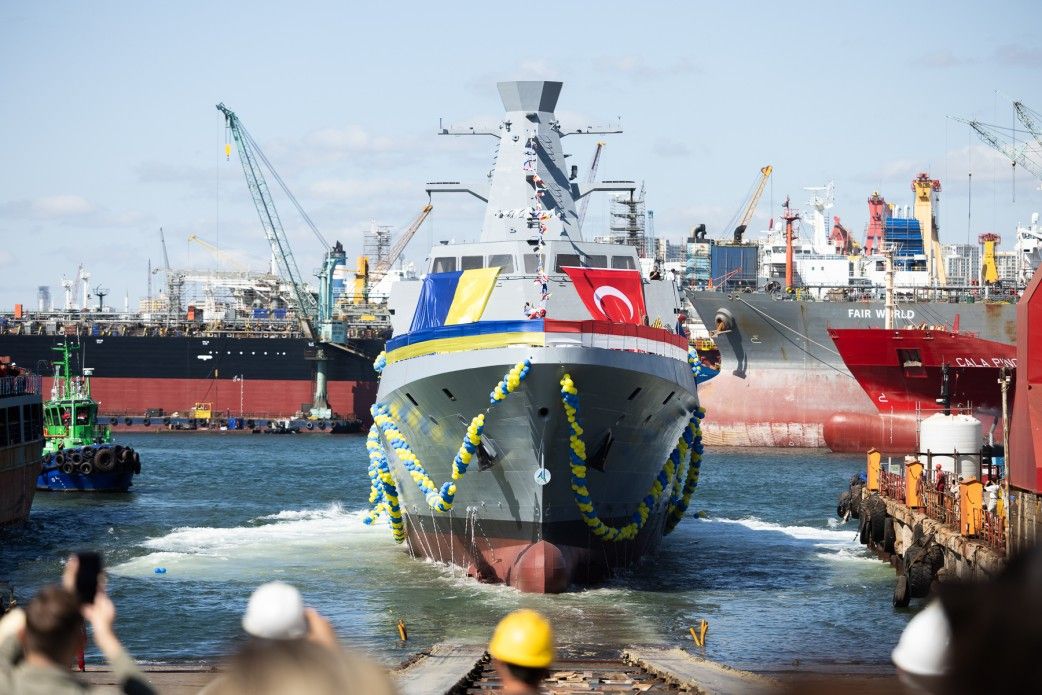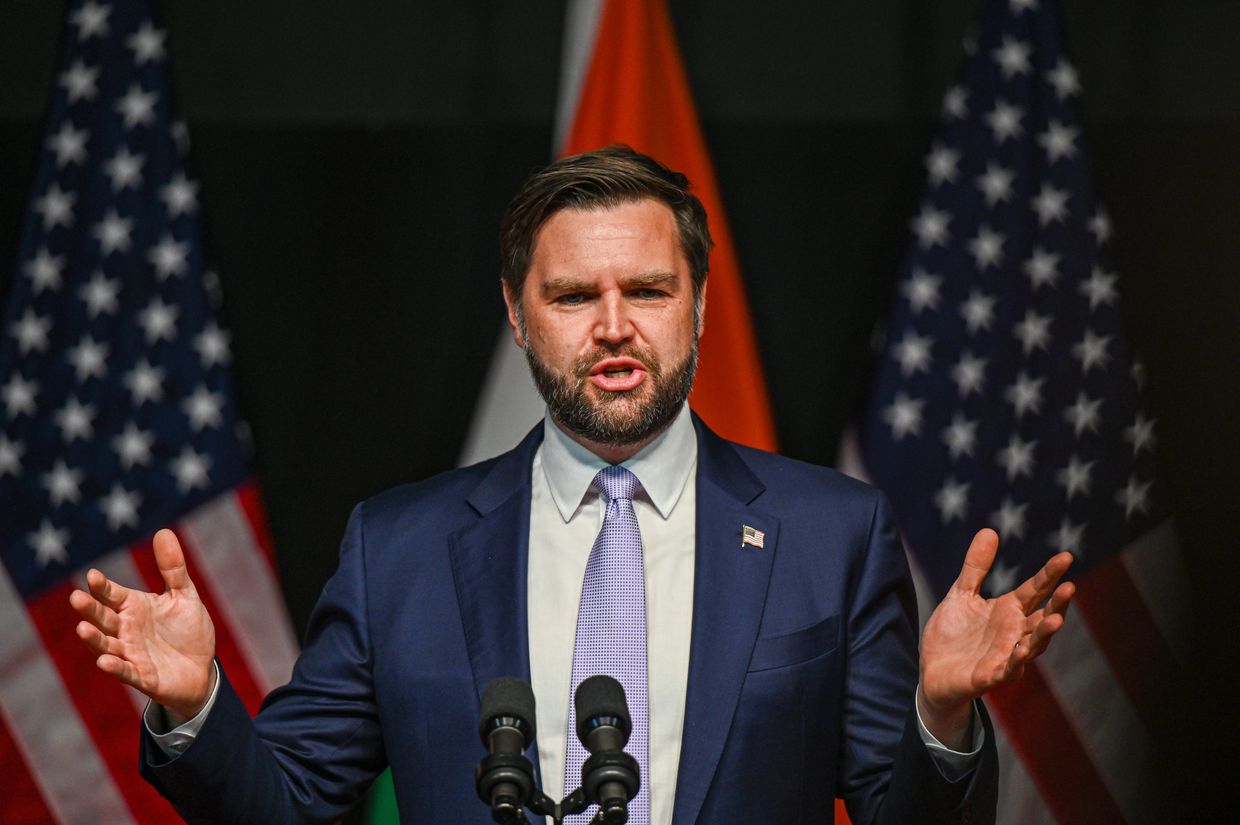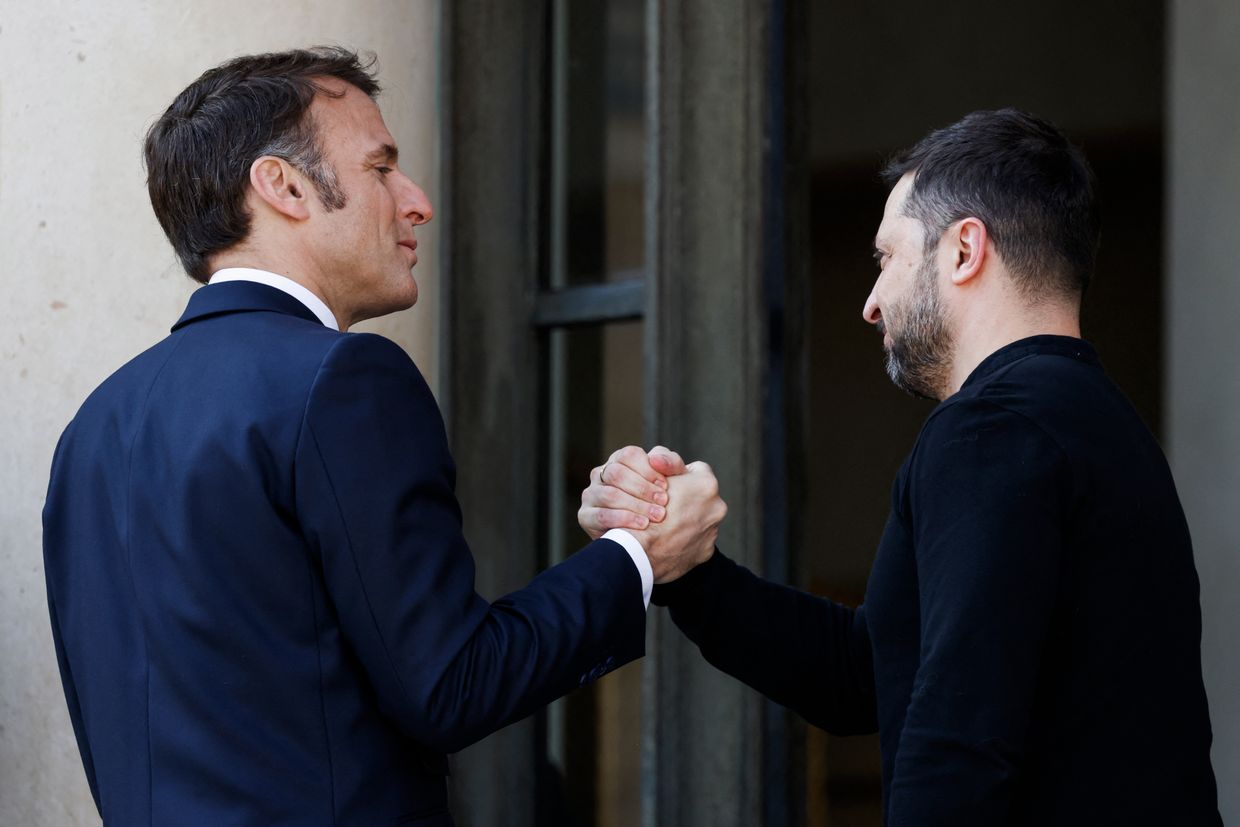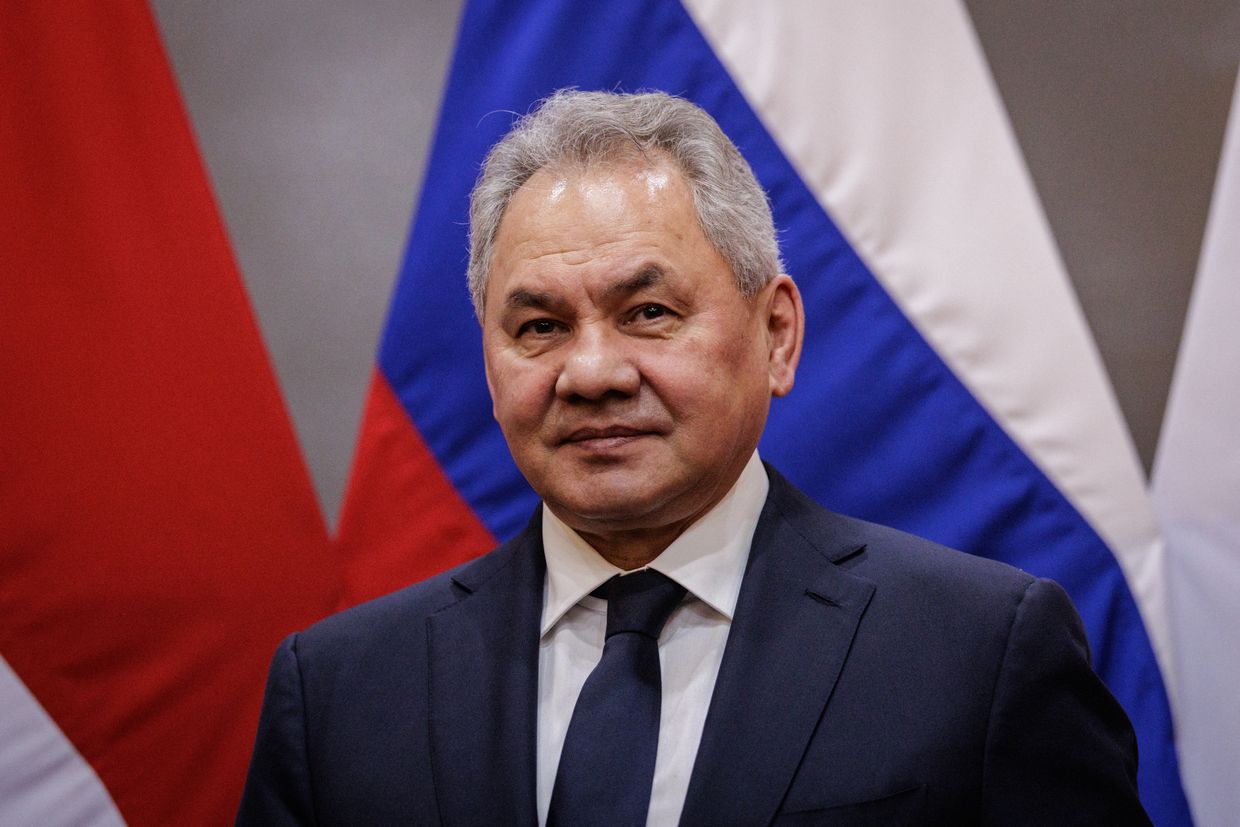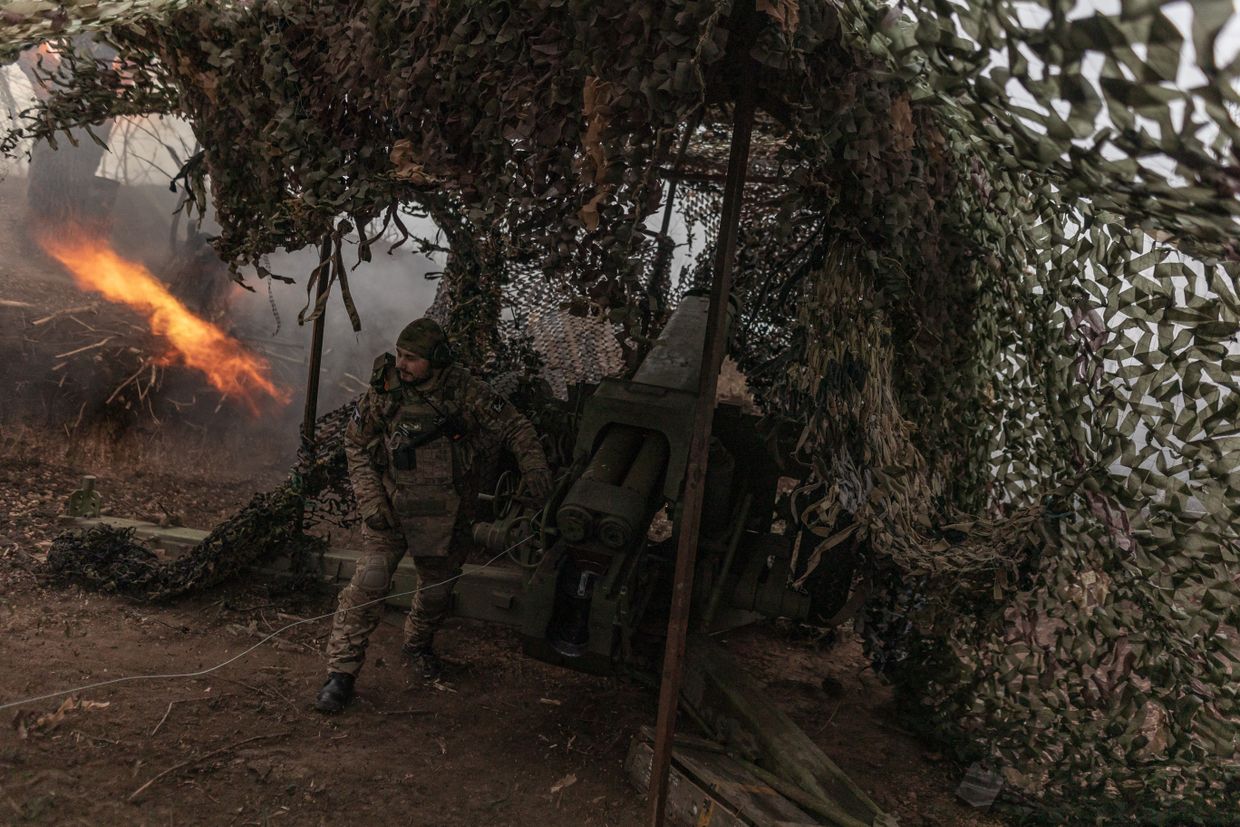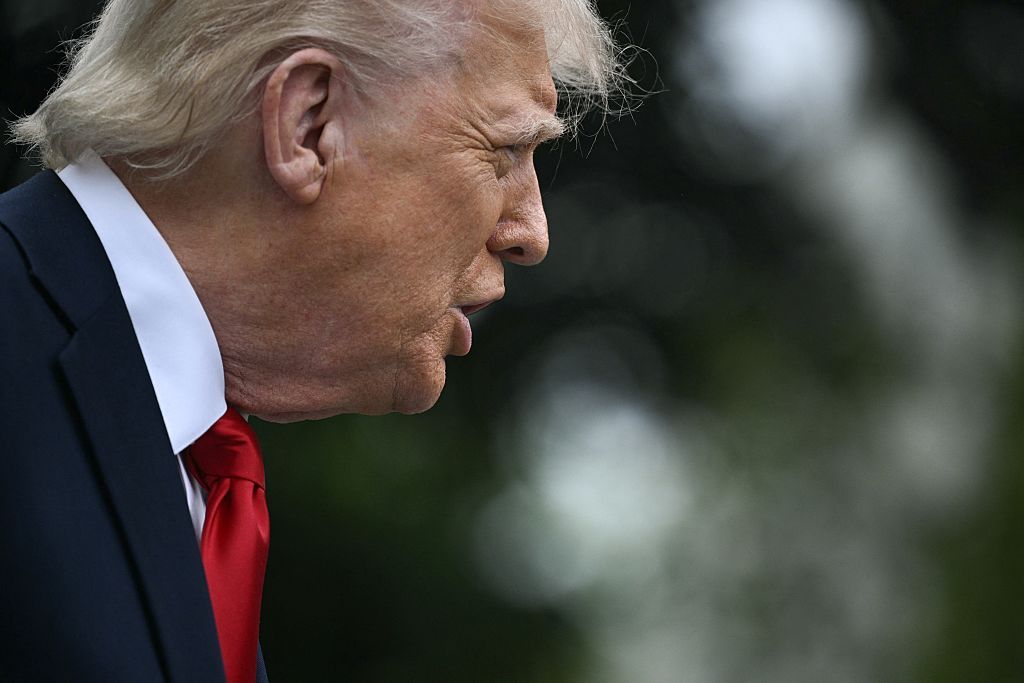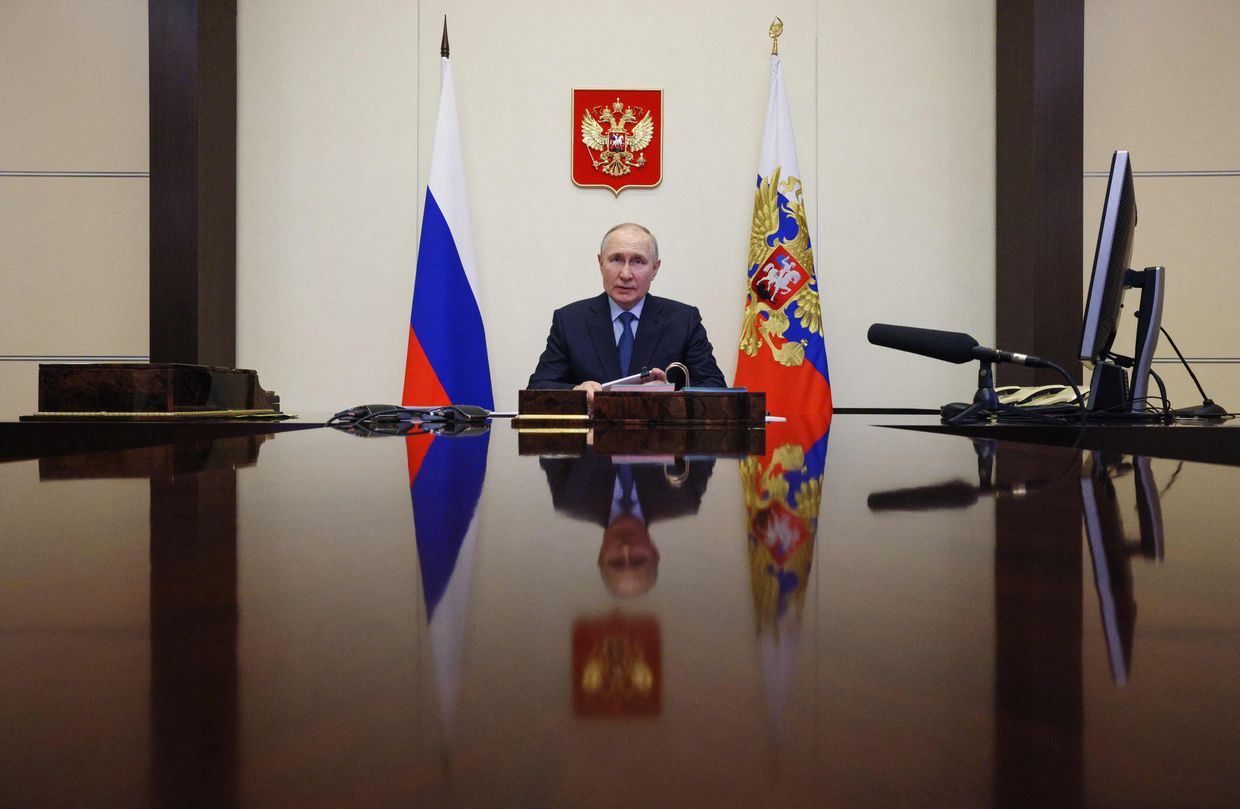Key developments on Aug. 2:
- Ukraine's second Ada-class corvette launched in Turkey
- Occupied Crimea hit by Ukrainian missile attack, Russia claims
- China claims its Ukraine peace plan has support of more than 110 countries
- 'Signs of escalation' on battlefield in Kharkiv sector, Ukraine's military says
- Russia exaggerating numbers of contract soldiers, investigation claims
A new Ada-class multi-purpose corvette built in Turkey for Ukraine was launched in Istanbul on Aug. 1, Defense Minister Rustem Umerov said.
The ship, named after Hetman Ivan Vyhovskyi, is the second vessel of its class constructed for Kyiv in Turkey after the corvette Hetman Ivan Mazepa was launched in October 2022.
Hetman Ivan Vyhovskyi will make its maiden voyage in 2026 and be officially handed over to Ukraine in the first quarter of 2027, the Turkish shipbuilding company STM said.
The vessels have been built abroad due to Russia's ongoing full-scale war and the threat from the Russian Black Sea Fleet.
"I am grateful to our Turkish partners for their support during a difficult time for our country," Umerov said after attending the launching ceremony at RMK Marine shipyard together with First Lady Olena Zelenska, Navy Commander Olelksii Neizhpapa, Crimean Tatar leader Mustafa Dzhemilev, and Haluk Bayraktar, the CEO of the Turkish arms company Baykar.
"Ukraine has already broken the dominance of the Russian fleet at sea, destroying dozens of ships. We are actively expanding the capabilities of the Ukrainian Navy in the Black and Azov Seas," Umerov added.
According to the minister, both corvettes "are equipped with cutting-edge weapons and will become a significant addition to our fleet."
Hetman Ivan Mazepa, currently undergoing sea trials, is to become the Ukrainian Navy's new flagship after its predecessor, the frigate Hetman Sahaidachny, was scuttled in March 2022 to prevent capture by Russian forces.
The Ada-class vessel is armed with a 76 mm naval gun, 12.7 mm remotely controlled STAMP guns, fire control radars, satellite systems, and electronic warfare systems.
Despite its meager naval force, Ukraine managed to inflict heavy damage on the Russian Black Sea Fleet with kamikaze sea drones and missile strikes, successfully reopening a Black Sea trade corridor.
Russia is believed to have lost around a third of its Black Sea Fleet vessels due to Ukrainian attacks, representing one of Kyiv's chief successes in the war.
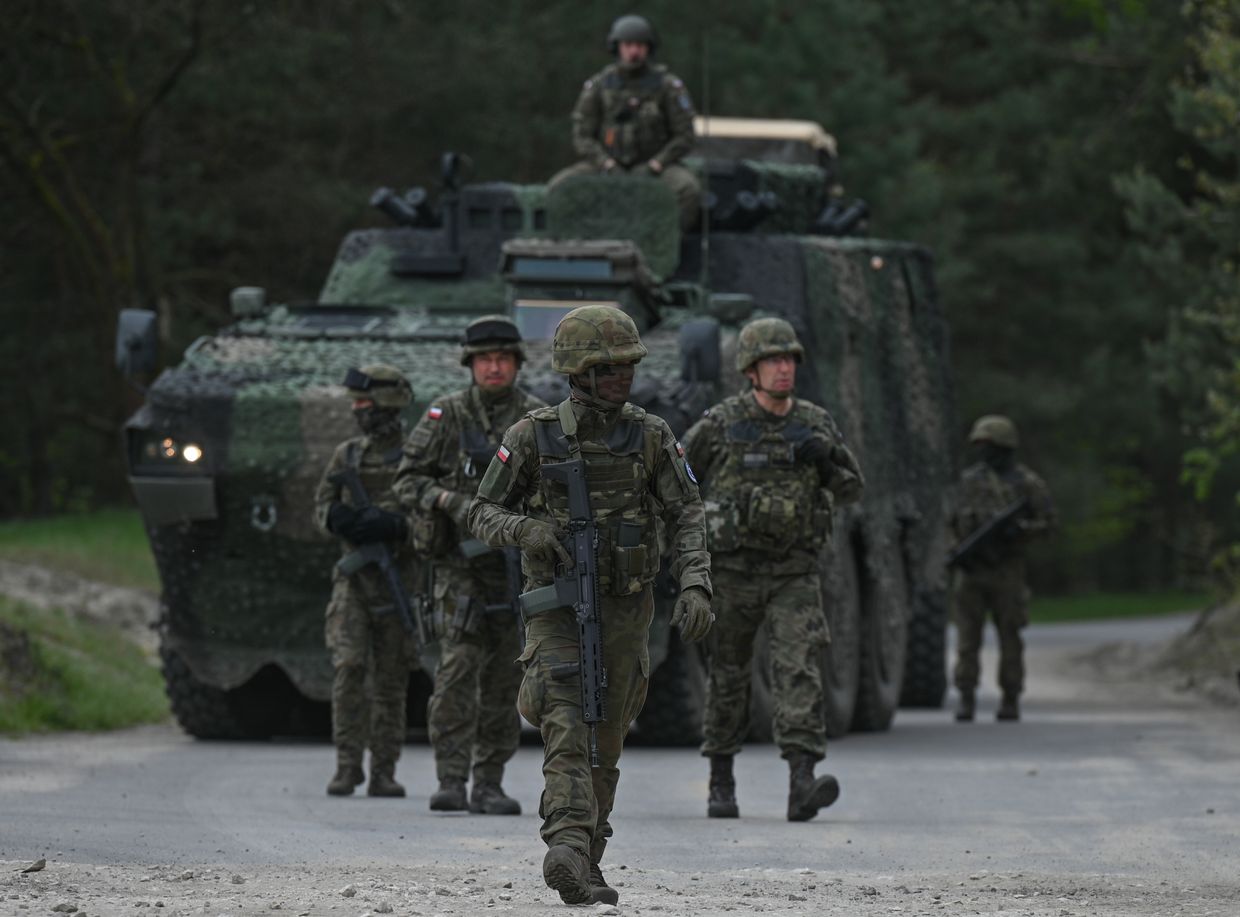
Occupied Crimea hit by Ukrainian missile attack, Russia claims
Possible ATACMS missiles and drones targeted Russian-occupied Crimea overnight on Aug. 2, occupation authorities claimed amid reports of explosions in various locations on the peninsula.
Residents reported hearing multiple blasts in Sevastopol, Simferopol, and Yevpatoria in the occupied peninsula, the Telegram channel Crimean Wind reported.
Ukraine has not commented on the claims, which could not be independently verified.
Mikhail Razvozhayev, the Russia-installed proxy head of Sevastopol, claimed that fragments of drones and U.S.-made missiles were found in the city after being downed by air defenses.
At least four Ukrainian air targets have been downed, he claimed.
An air raid alert sounded at around 1:30 a.m. Kyiv time. No casualties were reported at the moment.
According to Crimean Wind, fires broke out near Russian air defense positions in Balaklava, lying at Sevastopol's outskirts, at the time of the attack.
The channel also shared footage of burning debris in Sevastopol and said that smoke was rising from the 13th Ship Repair Plant of the Black Sea Fleet in Kilen Bay.
The full extent of damage is being determined.
Razvozhayev claimed that houses, high-rise buildings, powerlines, streets, and other civilian property were damaged by fallen debris. Russia does not usually comment on possible hits against military installations.
The occupied peninsula has been repeatedly targeted by Ukrainian drone and naval strikes, forcing Russian forces to withdraw much of its naval power and beef up air defenses.
An earlier strike overnight on July 26 hit Russia's military airfield in Saky, Ukraine said, while a strike on July 23 reportedly hit a ferry used to transport military equipment across Kerch Strait.

China claims its Ukraine peace plan has support of more than 110 countries
China's six-point plan for peace in Ukraine has the support of more than 110 countries, a Beijing official said on Aug. 2.
China officially declares itself a neutral party to Russia's full-scale war in Ukraine and has denied providing lethal aid to both sides, but Beijing and Moscow continue to develop closer ties, most recently with Russian President Vladimir Putin visiting his counterpart Xi Jinping in May.
Beijing has been trying to enlist developing nations to join its six-point peace plan, which China and Brazil laid out in May.
The six-point plan calls for non-escalation or provocations by either side, an international peace conference accepted by both Russia and Ukraine, and an increase in humanitarian assistance, as well as an exchange of prisoners of war.
All possible efforts must be made to "prevent nuclear proliferation and avoid nuclear crisis," and attacks on nuclear power plants and other peaceful nuclear facilities "must be opposed."
The last point calls for enhanced international cooperation on several issues in order to "protect the stability of global industrial and supply chains."
The plan makes no mention of Ukraine's territorial integrity or the withdrawal of Russian troops from Ukraine.
Speaking on Aug. 2 during a trip to Brazil, with which China jointly proposed the plan, Special Representative of the Government of the People's Republic of China for Eurasian Affairs, Li Hui, claimed international support for it was growing.
"China and Brazil jointly published the so-called six-point consensus on the promotion of a political settlement of the Ukrainian crisis," he said in comments reported by Ukrinform.
"This statement has gained the support of more than 110 countries."
He did not specify which countries had pledged their support. In early June, China said the plan had the support of 45 countries.
The Chinese proposal has been presented as an alternative to President Volodymyr Zelensky's peace plan, which is backed by Kyiv's Western partners.
Zelensky's 10-point peace formula, a plan first outlined in the fall of 2022, calls for a complete withdrawal of Russian forces from Ukraine, punishing those responsible for war crimes, and the release of all prisoners, among other goals.

'Signs of escalation' on battlefield in Kharkiv sector, Ukraine's military says
Ukraine's military said on Aug. 1 that several observations on the battlefield suggest Russia could be escalating military operations in Kharkiv Oblast.
"The situation in the operational area of the Kharkiv Group of Forces remains difficult, tense and has signs of escalating," group spokesperson Vitalii Sarantsev said on national TV, in comments reported by Ukrinform.
Russia launched the offensive in the northern part of Kharkiv Oblast back in May. The push eventually ran out of steam as Ukrainian forces halted Moscow's advance.
Sarantsev said Russian forces observed in Kharkiv Oblast were conducting internal rotations and had increased their presence in border areas.
He also said there had been an uptick in sabotage and intelligence gathering operations.
Elsewhere, President Volodymyr Zelensky told French media on July 30 that Moscow has begun concentrating its efforts in the east, "throwing everything they have" in the Pokrovsk direction.
Ukraine's military acknowledged an increasingly difficult situation in the Pokrovsk direction as battlefield monitoring sites indicate steady progress of Russian troops westward.
"Today, they (Russian forces) are concentrating the largest number of personnel, the largest number of weapons and KAB bombs, everything they have, in the Pokrovsk direction," Zelensky said.
According to the president, Russia shifted its focus to the east after it failed to take Kharkiv.
Zelensky added that Russian forces also plan to advance in other directions in the east, such as Kostiantynivka, Toretsk, or Sloviansk, but at the moment, Pokrovsk remains the main focus.
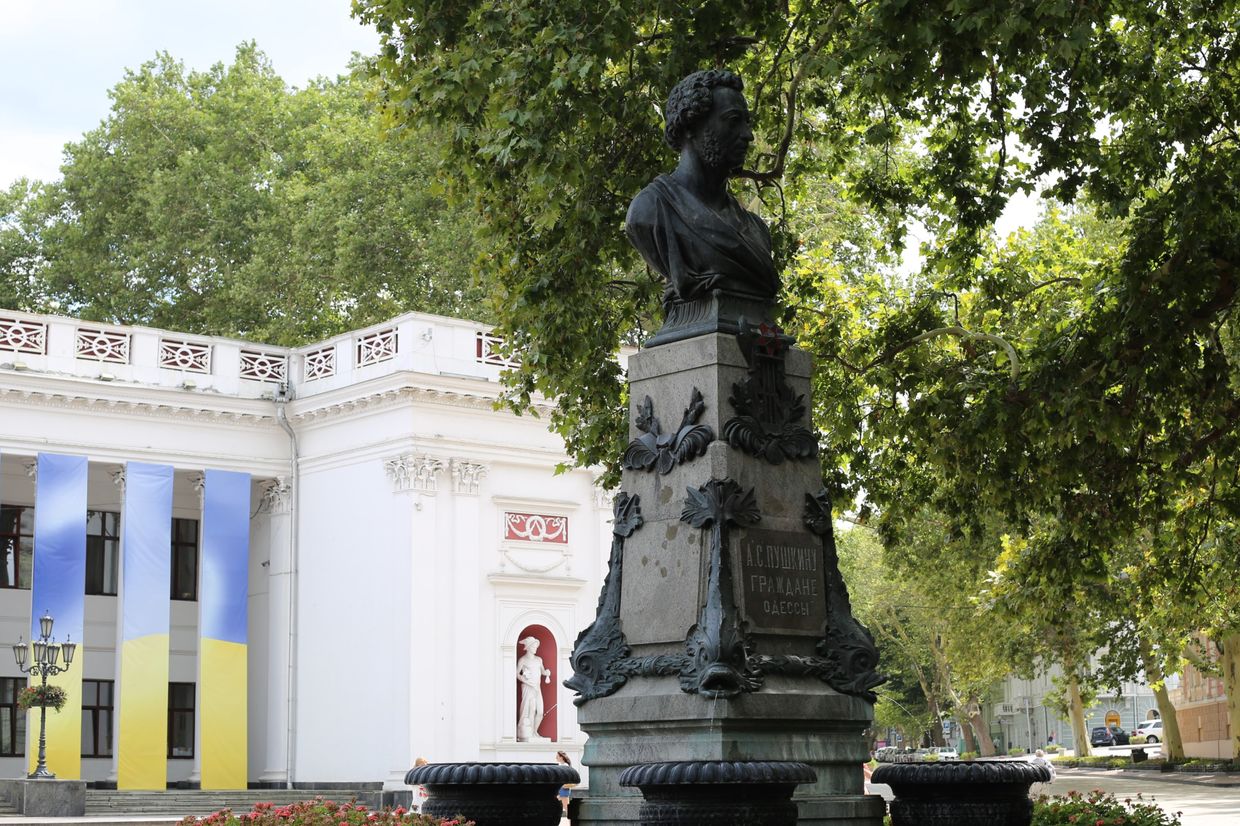
Russia exaggerating numbers of contract soldiers, investigation claims
Russia is inflating the true number of new contract soldiers it is recruiting by one-and-a-half times, according to a joint investigation by Important Stories and the Conflict Intelligence Team (CIT) published on Aug. 1.
The Russian Defense Ministry announced in December that there were 640,000 soldiers serving under contract.
But citing data from Russian federal budget expenditures, Important Stories and CIT said only 426,000 Russians had received a one-time payment for signing a contract during the period from autumn 2022 to April 2024.
According to the outlets, this leaves a discrepancy of around 214,000 which cannot be accounted for by variations in how one-time payments are given out.
They also cited an anonymous source who claimed that in some regions of Russia, only 50-60% of recruitment targets were being met.
Russian dictator Vladimir Putin on July 31 ordered an increase in the sign-on bonus for new military recruits to serve in Ukraine to 400,000 rubles (over $4,600).
The presidential decree published on the government website effectively doubled the lump-sum payment of 195,000 ($2,260) rubles initially promised to recruits in September 2022.
Russia seeks new soldiers for its war as the full-scale invasion continues to take a heavy toll on its military's manpower.
All Russian citizens and foreigners who signed up for one-year service between Aug. 1 and the end of 2024 will be eligible for the increased bonus.
The document says that the payment is intended to provide "additional means of social support" for soldiers and their families. It also recommends that Russian occupation authorities in Ukraine offer an additional sum of 400,000 rubles.
Regional authorities across Russia have already begun offering other financial incentives for potential recruits.



